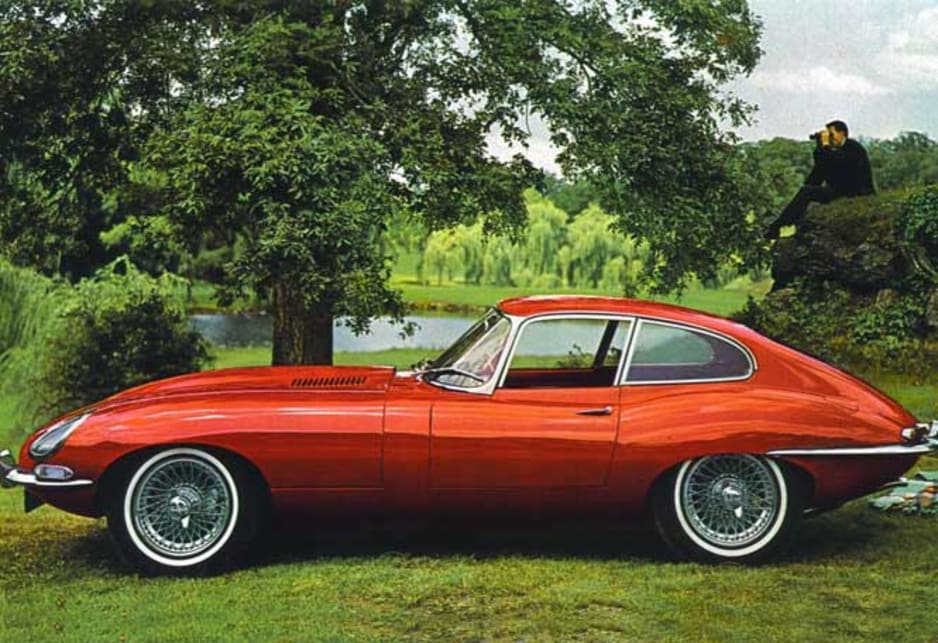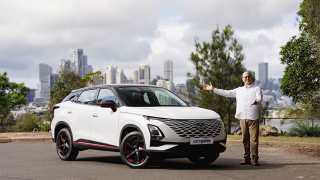
Used Jaguar E-Type review: 1961-1971
- Jaguar E-Type
- Jaguar E Type 1961
- Jaguar E Type 1962
- Jaguar E Type 1963
- Jaguar E Type 1964
- Jaguar E Type 1965
- Jaguar E Type 1966
- Jaguar E Type 1967
- Jaguar E Type 1968
- Jaguar E Type 1969
- Jaguar E Type 1970
- Jaguar E Type 1971
- Jaguar E-Type Reviews
- Jaguar Reviews
- Jaguar Convertible Range
- Jaguar Coupe Range
- Convertible
- Coupe
- Jaguar
- Used Car Reviews
- Prestige & Luxury Cars
- Buying tips
The year 1948 was a big one for the car industry. The war in Europe had ended in 1945 and European carmakers had turned their attention back to peacetime production.
Three years on from the end of hostilities it was time to unveil the cars they’d been working on. Just about every car company had new and exciting models to tempt the taste buds of anyone who could afford them. Among the new models was a car with a brand new name: Jaguar.
Before the war they were called SS, short for Swallow Sidecar, the name of the company producing them, but after the war that name was on the nose after Mister Hitler and his henchman had committed all sorts of atrocities against innocent people.
A name change was called for and Jaguar was the one chosen. The XK120 was an all-new car, one that simply took your breath away. It was the first of a series of sports cars with the XK prefix that culminated in the sexiest of them all, the E-Type.
Still today, 47 years after its spectacular launch at the Geneva Motor Show, the E-Type holds its allure with anyone who appreciates the automotive artform.
MODEL WATCH
Jaguars were the quintessential sports cars when sports cars were special and not dressed up family cars. The first Jaguar, the pre-war SS100 wasn’t a Jaguar as such, but it was a pure sports machine. With its long bonnet, stumpy tail and flowing guards it looked the part, but even more it had the performance to back up its sporty looks.
The first post-war Jaguar was the XK120 and it took the world by storm. It retained the same classic proportions of the pre-war car, but had an all-enveloping body that blended the sweeping guards in with the overall body to create a beautiful car that still turns heads today.
It also had the performance; the ‘120’ name signifying that it would do 120 mph, or 193 km/h, in 1948. The XK120 remains a classic for good reasons, but it was followed by other classics in the XK140 and XK150, before the E-Type arrived in a blaze of glory in 1961.
If the Jaguar road cars became all-time classics for their looks and performance, their allure was increased by the exploits of the racing Jaguars that were so successful in sports car racing in the 1950s. The Le Mans-winning C-Type was a racing evolution of the road going XK120, but the D-Type was an all-new car that dominated Le Mans in the mid-‘50s.
When it came to develop a replacement for the XK150 Jaguar blended the mechanics of the earlier XK sports models with the looks and construction of the D-Type. The main body was of monocoque construction similar to the D-Type’s, with front and rear subframes to carry the engine, gearbox and suspension at the front and the diff and rear suspension at the back.
Low and sleek, with the classic long bonnet and short tail proportions that its predecessors had, the E-Type was beautiful in every sense of the word. Under the massive one-piece bonnet was a 3.8-litre double-overhead camshaft six-cylinder engine fed by triple SU carburetors and developing close to 200 kW.
It was a development of the famous XK engine that helped Jaguar establish its high performance credentials. With heaps of torque from its long strike configuration it was both flexible and capable of propelling the low-slung sports car to very high speeds. The E-Type was capable of reaching 150 mph (250 km/h), which made it the perfect car in which to cross the continent at high speed.
The first E-Type had a rather clunky Moss four-speed gearbox, which was one of the few criticisms of the early model. That was changed in 1964 for a Jaguar four-speed all-synchromesh gearbox, which was a much smoother shifting unit.
The E-Type’s suspension was independent front and rear, a combination of upper and lower wishbones with front torsion bars and a roll bar, and the brakes were discs all round, a product of Jaguar’s racing experience and advanced for the day.
On the road the E-Type could quite happily be driven quietly around town or it could just as happily be driven fast and furiously on the open road. The engine’s torque meant it would pull hard from low down in high gears and respond smoothly and willingly as the revs rose. Its handling was balanced and reassuring, but its braking initially left a little to be desired. The brakes were later improved and better matched the performance of the E-Type.
The Series 2 came in 1966, but by then Jaguar had to bow to the safety demands of the US market, and there was the Series 3 V12 that came in 1971. There was also what is generally known as Series 1 ½. It’s not an official factory designation, but one that has been given to late Series 1 cars that had some of the Series 2 updates.
Along the way the shape on the bonnet changed to allow more cooling air into the radiator for hotter climates than it had to endure in its homeland, the headlights sadly were uncovered and raised to suit American laws, and the tail lights were also changed. None of the changes improved on the original.
The engine was enlarged to 4.2 litres in 1964, but without extra performance, the gearbox was changed to a Jaguar unit from the clunky old Moss ’box, the flat floor was altered with the addition of a depression for a footwell to give a more comfortable driving position.
The E-Type was initially sold as a sleek coupe and a stunning convertible, but later the company bowed to the demand for a version that would accommodate more than the two of the original car and it produced the ugly duckling two-plus-two coupe from 1966. With a bulging roofline the 2-plus-2 lost the classic lines and proportions of the original cars and wasn’t as popular with enthusiasts.
IN THE SHOP
Start by checking the authenticity of the car as incorrect changes can have a dramatic effect on values. The engine is generally quite robust. They tended to use oil so a blue haze coming from the tailpipes is not unusual, as long it’s not a smoke screen. They can also suffer from head gasket issues.
Like the engine the gearboxes usually give little trouble. The Moss gearbox was tough and reliable, but not generally well liked because of its poor shifting quality, and many cars will have been updated to the later all-synchromesh ’box. Check to make sure it goes into gear readily without baulking or clashing, which is likely to mean the synchros need replacing.
Check the rear-end carefully for leaks from the diff and the inboard rear disc brakes. When driving listen intently for clunks and clinks that might signal a problem with universal joints, stub axle splines or bottom pivots. Any directional instability or wallowing when cornering briskly is likely to be caused by wear in the Metalistik bushes between the body and the rear subframe.
Rust can also be a problem, as it with most old cars. Check the doors, sills, floors and the bonnet. The bonnet is also prone to the odd accidental knock that can knock it out of alignment.
IN A CRASH
The E-Type was born before the perceived need for passive safety. It was the product of a time it was thought that handling, braking and engine performance were enough to extract you from a tricky situation.
Its handling was impeccable, it generally braked well, and its engine gave it the zip to power out of trouble. Sadly those things are no longer considered enough and cars are only thought safe if they have airbags and ABS, none of which the E-Type had.
AT THE PUMP
With three SU carburetors feeding the Jaguar’s big six the E-Type could not be described as economical. It was conceived in a time when petrol was cheap and there was no indication supplies would one day run out. Still, driven with a deft touch on the right pedal the E-Type would do 20 mpg (14 L/100 km).
LOOK FOR
• Classically elegant looks
• Thrust of six-cylinder engine
• Comfortable long distance cruising
• Great handling
• Powerful braking
THE BOTTOM LINE
One of the all-time great cars still turns heads almost 50 years since it was launched.
RATING
85/100
Pricing
| Year | Price From | Price To |
|---|---|---|
| 1971 | N/A | N/A |
| 1970 | N/A | N/A |
| 1969 | N/A | N/A |
| 1968 | N/A | N/A |
| 1967 | N/A | N/A |
| 1966 | N/A | N/A |
| 1965 | N/A | N/A |
| 1964 | N/A | N/A |
| 1963 | N/A | N/A |
| 1962 | N/A | N/A |
| 1961 | N/A | N/A |
Range and Specs
| Vehicle | Specs | Price* | |
|---|---|---|---|
| 3.8 | 3.8L, Leaded, 4 SP MAN | No recent listings | 1961 Jaguar E Type 1961 3.8 Pricing and Specs |










